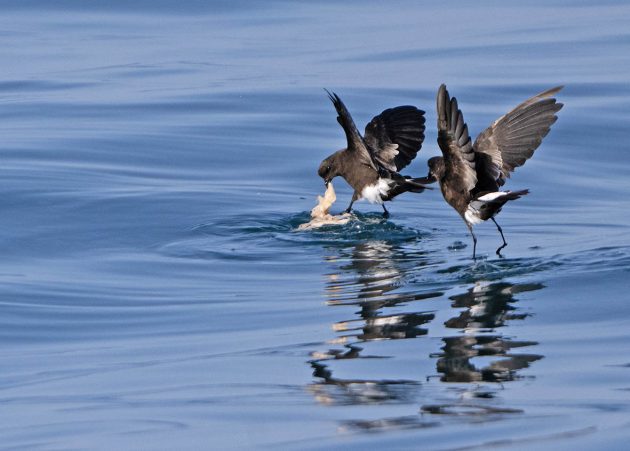An early morning rise with a departure from home at 0530 hours is how last Sunday started. Our aim was a two-hour drive to the town of Rota on the SW Atlantic coast of Spain. With luck, we might have enough time to grab some breakfast in the port café before we embarked. That successfully achieved, we then walked the 300 or so metres to a small fishing boat that was waiting to take us out to look for seabirds.
Pelagics are always full of uncertainty. I have had wonderful trips but others, at the same time of year, which were really poor. Today there was no wind. That was welcomed by those who didn’t fancy six hours negotiating the Atlantic swells but I was nervous. No wind usually means no birds. Many seabirds rely on wind for effortless flight and I suspected there wasn’t going to be much in the air. We just had to hope that we might find rafts of sitting birds but that, of course, is like looking for the proverbial needle. The open ocean resembles a desert in which sand has been replaced by water. You can travel for miles and miles across an empty ocean. Then, find an upwelling, a pod of feeding dolphins or a trawler bringing up its nets, and you hit the jackpot.
How do these seabirds find food in this vast emptiness? Many have an excellent sense of smell and they are able to detect food from many miles away. Others, such as gulls and skuas, simply watch out for large gatherings of seabirds in the horizon. We had been sailing for the better part of an hour with not a bird in sight when we started seeing a few shearwaters flying low over the horizon. As we got closer to them, others appeared and soon we were among several rafts. As expected, there wasn’t much flying, the birds waiting for the wind to pick up. It gave us an opportunity to observe these birds at relatively close quarters as they weren’t keen to take off. Cory’s (Calonectris borealis) and Scopoli’s Shearwaters (Calonectris diomedea) were the main species, mostly the former.

But we also picked up Sooty Shearwater (Ardenna grisea), Manx Shearwater (Puffinus puffinus), Balearic Shearwater (Puffinus mauretanicus) and the beautiful Great Shearwater (Ardenna gravis). The odd Pomarine Skua (Stercorarius pomarinus) and Arctic Skua (Stercorarius parasiticus) showed themselves at a distance but Great Skuas (Stercorarius skua), usually common at this time of year, were missing altogether. We have noticed the impact of avian flu on some seabirds that were once regular and abundant in these waters. It’s not just Great Skuas, Northern Gannets (Morus bassanus) are also noticeably down.


After spending time watching and photographing the rafts, we decided to push on towards the coastal shelf. Once six miles out, we started seeing Wilson’s (Oceanites oceanicus) and European Storm Petrels (Hydrobates pelagicus), a few offering fleeting glimpses as they skimmed low and fast on the horizon. A couple of miles further and we were seeing storm petrels more frequently than up to that point. We decided it was time to slow down and put some chum on the water. Ideally, this would attract the odour-sensitive storm petrels and shearwaters. Then it was a matter of waiting, and you do have to be patient. Move away too soon and you risk the birds not having had time to reach the source of the chum.
It wasn’t long before we had half-a-dozen Wilson’s Storm Petrels around us, with the occasional European Storm Petrel amongst them.





We started taking photos oblivious of what was to come. More and more storm petrels kept coming, feeding around the boat, quite close. They started “walking on the water”, a typical behaviour that reputedly earned them the name petrel. The word was first recorded in 1703 by the English explorer William Dampier, basing himself on the earlier (~1670) word pitteral. The bird’s habit of skimming over the sea recalled St Peter the apostle’s walk on the Sea of Galilee, petrel being a diminutive of Peter.
Time passed and I took my eyes away from the camera. A spectacle unfolded in front of me. No fewer than fifty Wilson’s Storm Petrels feeding close to the boat, in a single flock! We went for a count of the numbers visible to us and we lost count at one hundred. Time flew by and it was time to return to port. Staying in one place had paid off!



We returned with an escort of gulls, Cory’s and Scopoli’s Shearwaters. As we disembarked and set off for a wonderful seafood lunch in a restaurant right on the port, it was the Wilson’s spectacle that dominated the conversation around the table.

Source link

